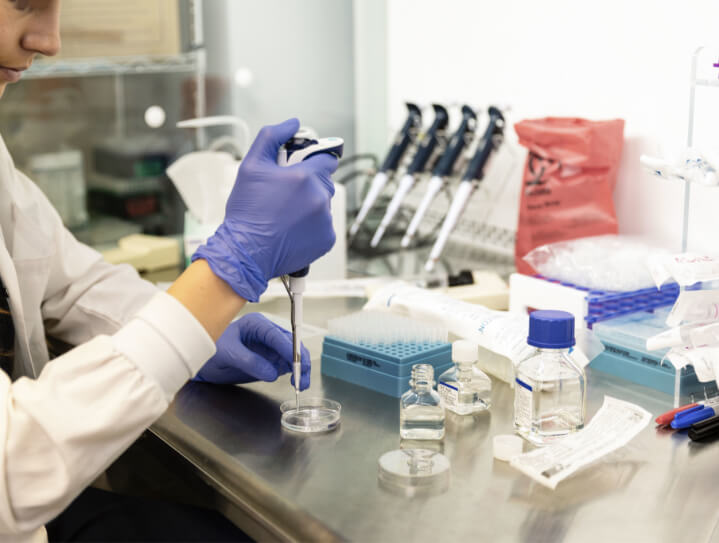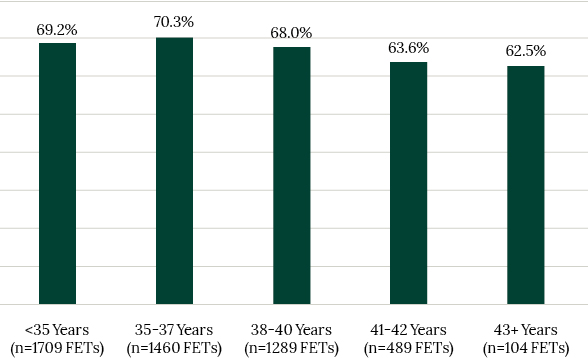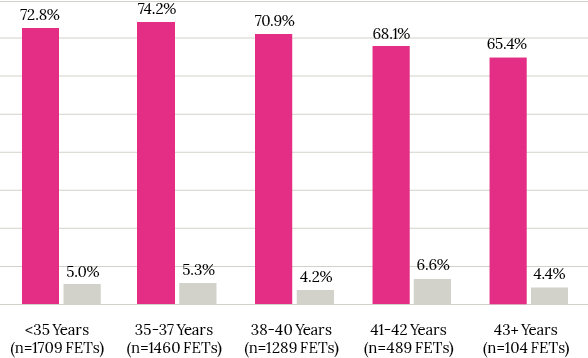CCRM Fertility Success Rates

Understanding Fertility Success Rates Data
CCRM is a proud member of the Society for Assisted Reproductive Technology (SART). The majority of CCRM’s IVF cycles are frozen embryo transfers following culture to the blastocyst stage and comprehensive chromosomal screening (CCS). In examining our IVF success rates on SART, one can see that our frozen embryo transfer success rates in every age category are among the highest in the world. Since more than two-thirds of all of our cycles are now performed as frozen embryo transfers, it is important to look at our frozen embryo transfer success rates in your age group to understand your chance for success and having a baby here at CCRM.
As pioneers of blastocyst CCS, our expertise spans more than a decade. Below is a look at our success rates for 5,051 CCS frozen embryo transfers (FET) for women using their own eggs. CCRM’s high quality CCS technology enables us to achieve some of the highest IVF live birth rates and lowest miscarriage rates regardless of age. All CCS testing is conducted at CCRM Genetics, CCRM’s proprietary in-house lab. Source: 2007-2017 SART data and CCRM Network internal data 2007-2018.
CCS Success (2007-2018)
As pioneers of blastocyst CCS, our expertise spans more than a decade. Below is a look at our success rates for 5,051 CCS frozen embryo transfers (FET) for women using their own eggs.
LIVE BIRTH RATES

Of 1,709 chromosomally normal frozen embryo transfers, among women under 35 years old, 69.2% resulted in a live birth.
Of 1,460 chromosomally normal frozen embryo transfers, among women 35 – 37 years old, 70.3% resulted in a live birth.
Of 1,289 chromosomally normal frozen embryo transfers, among women 38 – 40 years old, 68% resulted in a live birth.
Of 489 chromosomally normal frozen embryo transfers, among women 41 – 42 years old, 63.6% resulted in a live birth.
Of 104 chromosomally normal frozen embryo transfers, among women older than 43, 62.5% resulted in a live birth.
Source: 2007-2017 SART data and CCRM Network internal data 2007-2018.
CLINICAL PREGNANCY AND MISCARRIAGE RATES

.Pregnancy Rate. Miscarriage Rate
On average, national miscarriage (MAB) rates range from 11-45% with a significant increase with maternal age.
For CCRM patients who used IVF with CCS, our MAB rate is independent of maternal age. Our MAB rate is displayed above.
Source: 2007-2017 SART data and CCRM Network internal data 2007-2018.

